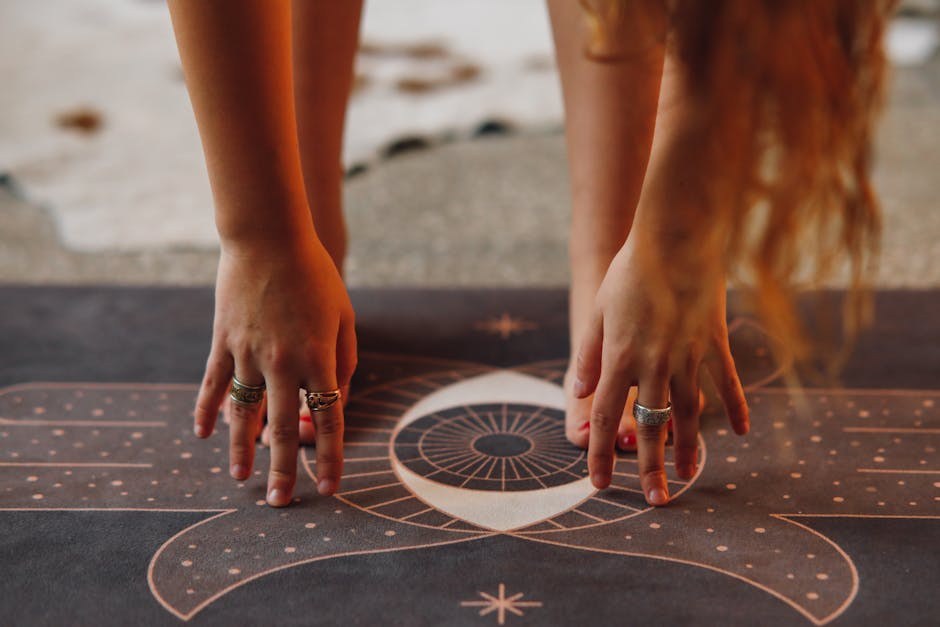Choosing a romantic restaurant can feel like a high-wire act – exciting, a little nerve-racking, and totally worth it when the chemistry clicks. You’re not just picking a place to eat; you’re selecting the stage for connection, the mood for conversation, and the backdrop for those first impressions that linger. Walk in with clarity about what matters and you’ll carry yourself with calm confidence. This guide breaks down how to notice the details that turn any dining room into a romantic restaurant and how to use those details to make a thoughtful, low-stress plan your date will appreciate.
What truly matters before you book
-
Sound that lets conversation breathe
Nothing dulls the spark faster than shouting over a speaker that treats the dining room like a club. A romantic restaurant treats sound like part of the décor: gentle, warm, and never competing with your voice. When you step inside, listen for a soft musical texture and a hum that feels cozy rather than chaotic. You want to hear your date’s laugh without leaning like you’re decoding a secret. If you can easily catch the server’s words and your own voices feel unforced, you’re in a romantic restaurant that understands intimacy starts with audibility.
-
Service that orbits, not hovers
Great service slips in and out like a well-timed aside – quick when you need help, invisible when you don’t. In a romantic restaurant, staff anticipate without intruding: a quiet refill, a brief suggestion, a menu explanation that helps you both decide without stealing the spotlight. Notice the rhythm at nearby tables. Do servers pause at a respectful distance? Do they appear when someone raises a hand rather than standing sentinel? This choreography creates psychological privacy, the kind that lets your attention return to each other again and again.

-
Lighting that flatters and calms
Harsh overhead glare is the enemy of ease. A romantic restaurant leans on pools of mellow light – candles, shaded lamps, or diffused fixtures – that soften edges and make everything feel a touch more cinematic. You should see the food clearly while still feeling bathed in warmth. If the light lets your expressions register naturally and smooths the room into a gentle glow, the message is simple: you’re meant to relax here. Lighting that flatters faces also slows the pace of the evening, encouraging conversation to open up rather than rush.
-
Food that’s delightful and easy to manage
A plate that demands a toolkit or drips onto your sleeve divides attention. In a romantic restaurant, dishes invite focus on each other – not on fighting a crab shell. Think past the spectacle and toward textures that are comfortable to eat while talking. Balanced flavors, shareable plates, and clean bites keep the spotlight where it belongs. The right menu is less about novelty and more about harmony; it supports the evening instead of upstaging it. When each bite fits seamlessly between stories, you’ll know the food is doing its quiet part.
-
Comfort that feels natural, not performative
Some dining rooms are so formal you feel like you’ve trespassed into a museum, while others are so familiar you’ll be interrupted by half the room. A romantic restaurant lands between those extremes. The seats invite lingering, the temperature doesn’t swing, and the vibe lets your shoulders drop. If it’s a place you frequent often, consider whether constant greetings will splinter the one-to-one energy you want. Fresh to both of you is often best: it signals effort without stress, enthusiasm without grandstanding, and makes the evening feel crafted just for this moment.

-
Ambiance that tells a coherent story
Ambiance is the sum of small decisions that add up to feeling. In a romantic restaurant, décor, music, scent, and pacing point in the same direction – intimacy. Candles pair with textured walls, flowers soften lines, and the room’s color palette hushes the edges. When these elements align, you step through the door and know you’ve crossed into a kinder tempo. Think of ambiance as an invitation to exhale. If the room whispers “slow down,” you’re more likely to be present, curious, and playful – the exact ingredients that make a date glide.
-
Privacy without isolation
Privacy is more than a curtain; it’s the respectful distance between tables, the layout that staggers seating, and sightlines that don’t funnel eyes toward your plate. A romantic restaurant understands proximity – close enough to feel part of a scene, far enough that your conversation is yours. Look for tables that allow an easy reach across, room to angle your chairs slightly, and space that mutes neighboring chatter into a friendly blur. When you can lean in and share a small joke without an audience, the room is doing careful, considerate work for you.
-
Spending that matches your comfort zone
Splurging can be sweet, but pressure lingers if either person worries about the bill. Choose a romantic restaurant that aligns with what you’re truly comfortable spending. Scan the menu in advance to sense the range and then decide what feels natural. That choice has a subtle benefit – it frees mental space. When price anxiety is off the table, you’re more generous with attention, and both of you can savor the evening without second-guessing. Affection grows fastest where expectations are clear and comfort is honest.

Turning criteria into a decision
-
Create a small, thoughtful shortlist
Paradoxically, deciding is easier when you reduce options. Narrow the field to a handful of places that meet your core needs – sound, light, privacy, and budget – and you’ll see differences more clearly. For each candidate, picture the moment you walk in together. Which room makes you instantly calmer? Which menu feels like a friendly guide rather than a test? The romantic restaurant that elicits that “yes, here” feeling is likely the right pick. Trust that instinct; it’s your attention gravitating toward ease.
-
Let your date’s tastes lead the way
Thoughtfulness is a superpower. If they avoid certain ingredients, prefer plant-forward plates, or love a particular cuisine, let that shape the plan. A romantic restaurant is romantic because it centers both people – and tailoring your choice says, “I listened.” Ask light, open questions ahead of time and pay attention to what makes their eyes light up. Flexibility doesn’t shrink the experience; it deepens it. Nothing builds comfort faster than realizing the evening has been designed with genuine consideration for the other person’s preferences.
-
Read reviews like an editor, not a scoreboard
Feedback is useful when you treat it as texture. Rather than chasing perfect ratings, look for patterns that matter to a date night: noise levels, pacing of courses, attentiveness, and whether tables feel cramped. A romantic restaurant often draws notes about its glow, its hush, and the way time seems to slow. Skim recent comments to confirm consistency – the last few weeks matter more than ancient raves. You’re not trying to win an argument with the internet; you’re looking for clues that the experience aligns with the atmosphere you want.
-
Match the venue to the day and hour
The same room feels different depending on the calendar. Early in the week, a bustling spot may turn serene; weekend prime time can transform a quiet nook into a parade. Choose a romantic restaurant with the date’s timing in mind. If you’re aiming for unhurried conversation, avoid known rush windows or oversized groups. Keep an eye on special menus and happy-hour energy – both can shape volume and pacing. Aim for a slice of the schedule when the room’s natural rhythm supports connection rather than competes with it.
-
Consider the route and the rendezvous
Logistics are invisible when done well – and intrusive when ignored. A romantic restaurant that’s simple to reach removes friction before it starts. If your date is coming from work, pick somewhere near their path so they don’t begin the evening flustered. If you live far apart, tilt the choice toward them; generosity translates without a speech. Think about parking, transit, or a short walk that lets you both decompress. When arrival feels effortless, the night gathers momentum right away.
-
Reserve with intention
Reservation habits signal care. When you book, request a table that supports conversation – a corner banquette or a two-top away from the service alley. Mention that it’s a date if you like; many places will try to accommodate with subtle touches. A romantic restaurant often organizes seating to encourage privacy, and a polite note helps them help you. Confirm the time on the day, arrive a few minutes early, and you’ll glide past the stress of waiting – a small, quiet luxury that sets the tone.
-
Start with a low-pressure meet if you’re unsure
If this is a first encounter and choosing feels heavy, there’s nothing wrong with beginning lighter – coffee, a pastry, or a brief stroll. That initial ease gives you a map of preferences you can use to pick a romantic restaurant for the next outing. You’ll learn whether they love lively energy or a hushed room, whether they’re adventurous with flavors or fond of classics. The second date then becomes an act of tailoring rather than guessing, which makes the choice feel wonderfully personal.
How to read the room like a pro
Step inside and pause for ten seconds. Notice your shoulders – do they drop? That feeling is data. In a romantic restaurant, staff greet you warmly without fanfare, the lighting softens edges, and the soundtrack supports the cadence of your voices. The layout gives you a little bubble of space while still letting you feel part of a living scene. Menus are easy to scan; nothing feels like a performance test. If all signs point to comfort, you’ve likely found the right canvas for the night.
Subtle table cues that elevate the mood
Small details compound. Candles that sit low keep sightlines clear. A table that allows elbows to rest without bumping creates ease. Silverware that doesn’t clang, chairs that slide silently, and plates that don’t wobble all contribute to the hush that a romantic restaurant cultivates. Even the spacing between courses matters – too fast feels rushed, too slow breaks the spell. When each element supports a flow of conversation, the meal becomes a ribbon threading your stories together rather than a series of interruptions.
Ordering with connection in mind
Consider how the sequence of dishes shapes dialogue. Shareable starters spark small moments of coordination – a gentle prelude to bigger topics. Choose mains that don’t demand awkward cutting or oversized bites. If you plan on dessert, leave room so the evening can stretch a little longer. A romantic restaurant gives you options that fit this arc; you can craft a pacing that mirrors the way you want the night to feel – unhurried, generous, and attentive.
Body language and the space between
Where you sit and how you angle your chairs can change the entire texture of the date. Side-by-side at a banquette can feel conspiratorial; across a small table invites eye contact and playful reach-ins. In a romantic restaurant, the furniture invites these micro-adjustments. Choose a configuration that makes soft touch easy and posture natural. You’re designing the geometry of conversation – an arm’s-length that says “I’m here” and a line of sight that invites stories to unfold.
Graceful pivots if something feels off
Even with careful planning, you might walk in and sense the vibe is wrong – the noise is higher than usual, a large party has just sat down, or the table isn’t what you requested. This is your moment for calm improvisation. Ask if there’s a quieter corner, take a short stroll before being seated, or switch to the bar for a gentler start. A romantic restaurant will often help reframe the experience if you communicate kindly. The goal is not perfection; it’s momentum toward comfort.
Framing the evening with presence
Once you’re seated and the room supports you, let the setting do its subtle work. Phones away, eyes up, voices at the volume the room invites. In a romantic restaurant, the slower tempo encourages curiosity – follow it. Ask thoughtful questions, listen fully, and allow silence to be friendly rather than anxious. When the surroundings are chosen with care, presence becomes easier – and presence is the part people remember.
If you want a shorthand checklist
- Can we hear each other without strain?
- Does the staff glide rather than hover?
- Is the light warm and forgiving?
- Do the dishes look delicious and manageable?
- Is the seating comfortable and not too familiar?
- Does the ambiance tell a coherent, calming story?
- Is the table placement private without feeling cut off?
- Does the price range feel easy?
If most of those answers are yes, you’re likely in a romantic restaurant that will carry the night along with gentle grace.
A final word on intention
The best plan is the one that makes both of you feel considered. Pick a romantic restaurant that aligns with what you value – eye contact, room to laugh, flavors that linger – and let the rest unfold. You’re not auditioning for a culinary award; you’re creating a small island of attention in a busy world. Choose the room that protects that attention and the night will take care of itself.